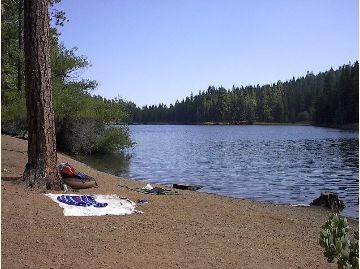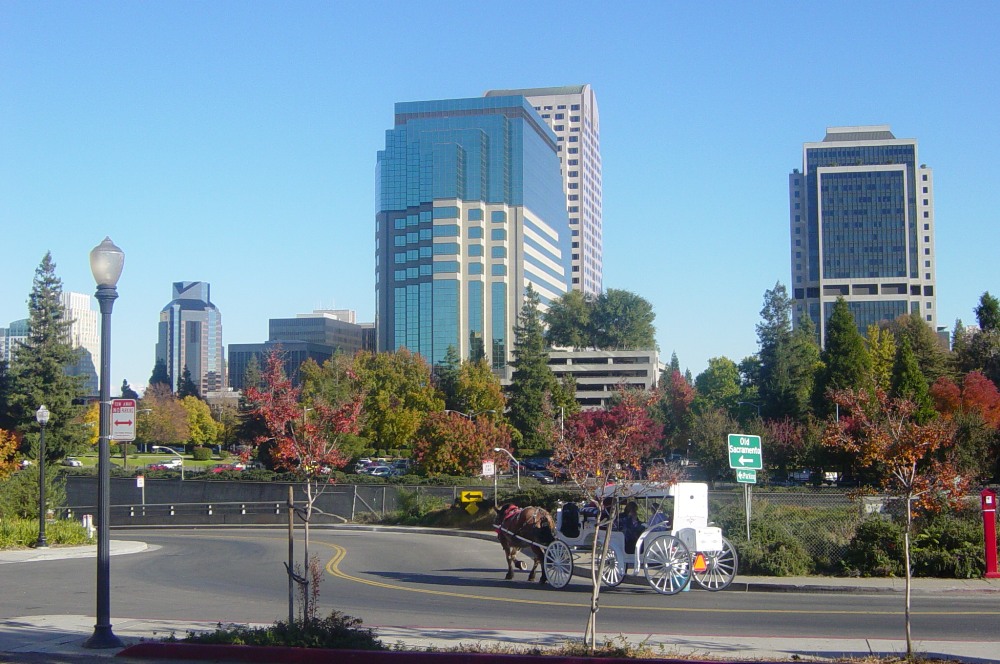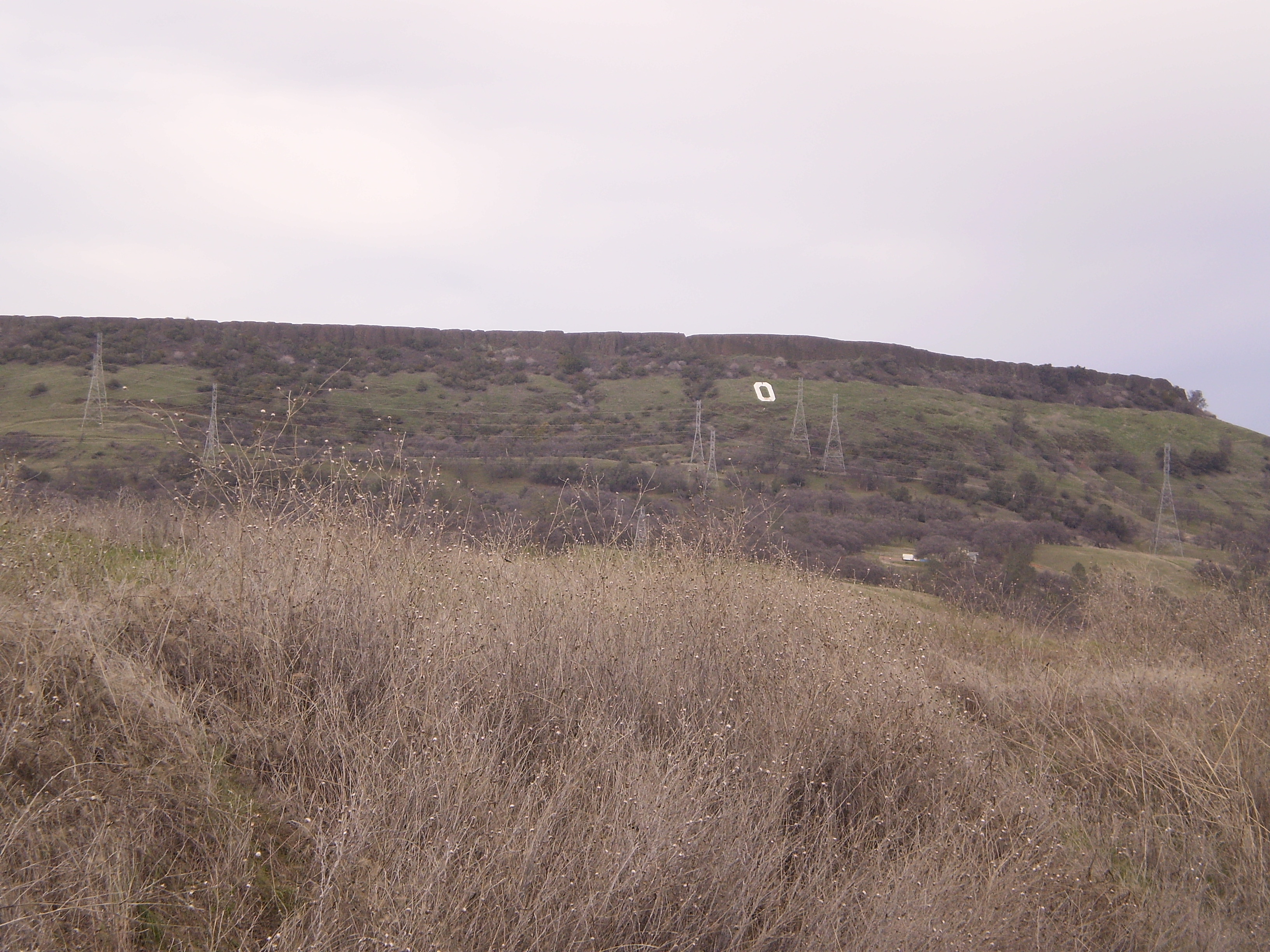|
California Postmile
California uses a postmile highway location marker system on all of its state highways, including U.S. Routes and Interstate Highways. The postmile markers indicate the distance a route travels through individual counties, as opposed to milestones that indicate the distance traveled through a state. The postmile system is the only route reference system used by the California Department of Transportation (Caltrans). California was the last state in the country to adopt mile markers, and exit numbers were not implemented until 2002. The state started the Cal-NExUS program in 2002, which would create a uniform exit numbering system for freeways. Included was a pilot program for the placing of mile markers along rural freeways. Currently, three freeway segments are a part of the experimental program: the Route 14 Freeway, the Route 58 Freeway in Kern County, and State Route 180 in Fresno. Caltrans has not decided if the mile marker program will be expanded to all rural freeways.< ... [...More Info...] [...Related Items...] OR: [Wikipedia] [Google] [Baidu] |
California Postmile
California uses a postmile highway location marker system on all of its state highways, including U.S. Routes and Interstate Highways. The postmile markers indicate the distance a route travels through individual counties, as opposed to milestones that indicate the distance traveled through a state. The postmile system is the only route reference system used by the California Department of Transportation (Caltrans). California was the last state in the country to adopt mile markers, and exit numbers were not implemented until 2002. The state started the Cal-NExUS program in 2002, which would create a uniform exit numbering system for freeways. Included was a pilot program for the placing of mile markers along rural freeways. Currently, three freeway segments are a part of the experimental program: the Route 14 Freeway, the Route 58 Freeway in Kern County, and State Route 180 in Fresno. Caltrans has not decided if the mile marker program will be expanded to all rural freeways.< ... [...More Info...] [...Related Items...] OR: [Wikipedia] [Google] [Baidu] |
California Highway Patrol
The California Highway Patrol (CHP) is a state law enforcement agency of the U.S. state of California. The CHP has primary patrol jurisdiction over all California highways and roads and streets outside city limits, and can exercise law enforcement powers anywhere within the state. The California Highway Patrol can assist local and county agencies and can patrol major city streets along with local and county law enforcement, state and interstate highways, and is the primary law enforcement agency in rural parts of the state. The California State Legislature originally established the California Highway Patrol as a branch of the Division of Motor Vehicles in the Department of Public Works, with legislation signed by Governor C. C. Young on August 14, 1929. It was subsequently established as a separate department with legislation signed by Governor Earl Warren in 1947. The CHP gradually assumed increased responsibility beyond the enforcement of the State Vehicle Ac ... [...More Info...] [...Related Items...] OR: [Wikipedia] [Google] [Baidu] |
Contra Costa County, California
) of the San Francisco Bay , subdivision_type = Country , subdivision_name = United States , subdivision_type1 = State , subdivision_name1 = California , subdivision_type2 = Region , subdivision_name2 = San Francisco Bay Area , seat_type = County seat , seat = Martinez , parts_type = Largest city , parts = Concord (population and land area) Richmond (total area) , unit_pref = US , area_total_sq_mi = 804 , area_land_sq_mi = 715.94 , area_water_sq_mi = 81 , elevation_max_footnotes = , elevation_max_ft = 3852 , population_as_of = 2020 , population_footnotes = , population_total = 1,165,927 , population_density_sq_mi = 1629 , established_title ... [...More Info...] [...Related Items...] OR: [Wikipedia] [Google] [Baidu] |
San Benito County, California
San Benito County (; ''San Benito'', Spanish for "St. Benedict"), officially the County of San Benito, is a county located in the Coast Range Mountains of the U.S. state of California. As of the 2020 census, the population was 64,209. The county seat is Hollister. San Benito County is included in the San Jose- Sunnyvale- Santa Clara, CA Metropolitan Statistical Area, which is also included in the San Jose-San Francisco- Oakland, CA Combined Statistical Area. El Camino Real passes through the county and includes one mission in San Juan Bautista. History Before the arrival of the first European settlers, the San Benito County area was inhabited by the Mutsun sub-group of the Ohlone Native Americans. In 1772 Father Juan Crespí conducted a brief expedition into the area and named a small river which he found in honor of San Benito de Nursia ( Saint Benedict), the patron saint of monasticism. The county was later named after the San Benito Valley, the valley surrounding ... [...More Info...] [...Related Items...] OR: [Wikipedia] [Google] [Baidu] |
Colusa County, California
Colusa County () is a county located in the U.S. state of California. As of the 2020 census, the population was 21,839. The county seat is Colusa. It is in the North Valley of California, northwest of the state capital, Sacramento. History Colusa County is one of the original counties of California, created in 1850 at the time of statehood. Parts of the county's territory were given to Tehama County in 1856 and to Glenn County in 1891. The county was named after the 1844 Rancho Colus Mexican land grant to John Bidwell. The name of the county in the original state legislative act of 1850 was spelled ''Colusi'', and often in newspapers was spelled ''Coluse''. The word is derived from the name of a Patwin village known as ''Ko'-roo'' or ''Korusi'' located on the west side of the Sacramento River on the site of the present-day city of Colusa. The name was established as ''Colusa'' by 1855. Early history Present-day Colusa County was originally home to the Patwin band o ... [...More Info...] [...Related Items...] OR: [Wikipedia] [Google] [Baidu] |
Sacramento County, California
Sacramento County () is a county located in the U.S. state of California. As of the 2020 census, the population was 1,585,055. Its county seat is Sacramento, which has been the state capital of California since 1854. Sacramento County is the central county of the Greater Sacramento metropolitan area. The county covers about in the northern portion of the Central Valley, on into Gold Country. Sacramento County extends from the low delta lands between the Sacramento River and San Joaquin River, including Suisun Bay, north to about ten miles (16 km) beyond the State Capitol and east into the foothills of the Sierra Nevada Mountains. The southernmost portion of Sacramento County has direct access to San Francisco Bay. Since 2010, statewide droughts in California have further strained Sacramento County's water security. History Sacramento County was one of the original counties of California, which were created in 1850 at the time of statehood. The county was na ... [...More Info...] [...Related Items...] OR: [Wikipedia] [Google] [Baidu] |
Calaveras County, California
Calaveras County (), officially the County of Calaveras, is a county in both the Gold Country and High Sierra regions of the U.S. state of California. As of the 2010 census, the population was 45,292. The county seat is San Andreas. Angels Camp is the county's only incorporated city. ''Calaveras'' is Spanish for "skulls"; the county was reportedly named for the remains of Native Americans discovered by the Spanish explorer Captain Gabriel Moraga. Calaveras Big Trees State Park, a preserve of giant sequoia trees, is in the county several miles east of the town of Arnold on State Highway 4. Credit for the discovery of giant sequoias there is given to Augustus T. Dowd, a trapper who made the discovery in 1852 while tracking a bear. When the bark from the "Discovery Tree" was removed and taken on tour around the world, the trees became a worldwide sensation and one of the county's first tourist attractions. The uncommon gold telluride mineral calaverite was discovered i ... [...More Info...] [...Related Items...] OR: [Wikipedia] [Google] [Baidu] |
Riverside County, California
Riverside County is a county located in the southern portion of the U.S. state of California. As of the 2020 census, the population was 2,418,185, making it the fourth-most populous county in California and the 10th-most populous in the United States. The name was derived from the city of Riverside, which is the county seat. Riverside County is included in the Riverside- San Bernardino-Ontario Metropolitan Statistical Area, also known as the Inland Empire. The county is also included in the Los Angeles- Long Beach Combined Statistical Area. Roughly rectangular, Riverside County covers in Southern California, spanning from the greater Los Angeles area to the Arizona border. Geographically, the county is mostly desert in the central and eastern portions, but has a Mediterranean climate in the western portion. Most of Joshua Tree National Park is located in the county. The resort cities of Palm Springs, Palm Desert, Indian Wells, La Quinta, Rancho Mirage, and Desert ... [...More Info...] [...Related Items...] OR: [Wikipedia] [Google] [Baidu] |
Butte County, California
Butte County () is a county located in the northern part of the U.S. state of California. In the 2020 census, its population was 211,632. The county seat is Oroville. Butte County comprises the Chico, CA metropolitan statistical area. It is in the California Central Valley, north of the state capital of Sacramento. Butte County is drained by the Feather River and the Sacramento River. Butte Creek and Big Chico Creek are additional perennial streams, both tributary to the Sacramento. The county is home to California State University, Chico and Butte College. History Butte County is named for the Sutter Buttes in neighboring Sutter County; ''butte'' means "small knoll" or "small hill" in French. Butte County was incorporated as one of California's 19 original counties on February 18, 1850. The county went across the present limits of the Tehama, Plumas, Colusa, and Sutter Counties. Between November 8 and 25, 2018, a major wildfire, the Camp Fire, destroyed most ... [...More Info...] [...Related Items...] OR: [Wikipedia] [Google] [Baidu] |
Plumas County, California
Plumas County () is a county in the Sierra Nevada of the U.S. state of California. As of the 2020 census, the population was 19,790. The county seat is Quincy, and the only incorporated city is Portola. The largest community in the county is East Quincy. The county was named for the Spanish ''Río de las Plumas'' (the Feather River), which flows through it. The county itself is also the namesake of a native moth species, '' Hadena plumasata''. History Before the California Gold Rush of 1849, the indigenous Mountain Maidu were the primary inhabitants of the area now known as Plumas County. The Maidu lived in small settlements along the edges of valleys, subsisting on roots, acorns, grasses, seeds, and occasionally fish and big game. They were decentralized and had no tribal leadership; most bands lived along waterways in and around their own valleys. Areas with high snowfall, including the Mohawk and Sierra valleys, were hunting grounds for game in the warmer months. In 1 ... [...More Info...] [...Related Items...] OR: [Wikipedia] [Google] [Baidu] |
Amador County, California
Amador County () is a county located in the U.S. state of California, in the Sierra Nevada. As of the 2020 census, the population was 40,474. The county seat is Jackson. Amador County, located within California's Gold Country, is known as "The Heart of the Mother Lode". There is a substantial viticultural industry in the county. History Amador County was created by the California Legislature on May 11, 1854, from parts of Calaveras and El Dorado counties. (historical marker placed by Board of Supervisors and Amador County Historical Society, 1954) It was organized on July 3, 1854. In 1864, part of the county's territory was given to Alpine County. The county is named for José María Amador, a soldier, rancher, and miner, born in San Francisco in 1794, the son of Sergeant Pedro Amador (a Spanish soldier who settled in California in 1771) and younger brother to Sinforosa Amador. In 1848, Jose Maria Amador, with several Native Americans, established a successf ... [...More Info...] [...Related Items...] OR: [Wikipedia] [Google] [Baidu] |
Placer County, California
Placer County ( ; Spanish for "sand deposit"), officially the County of Placer, is a county in the U.S. state of California. As of the 2020 census, the population was 404,739. The county seat is Auburn. Placer County is included in the Greater Sacramento metropolitan area. It is in both the Sacramento Valley and Sierra Nevada regions, in what is known as the Gold Country. The county stretches roughly 65 miles (105 km) from Sacramento's suburbs at Roseville to the Nevada border and the shore of Lake Tahoe. Etymology The discovery of gold in 1848 brought tens of thousands of miners from around the world during the California Gold Rush. In addition, many more thousands came to provide goods and services to the miners. On April 25, 1851, the fast-growing county was formed from parts of Sutter and Yuba Counties with Auburn as the county seat. Placer County took its name from the Spanish word for sand or gravel deposits containing gold. Miners washed away the gravel, le ... [...More Info...] [...Related Items...] OR: [Wikipedia] [Google] [Baidu] |








.jpg)
